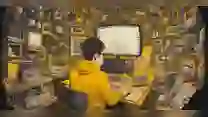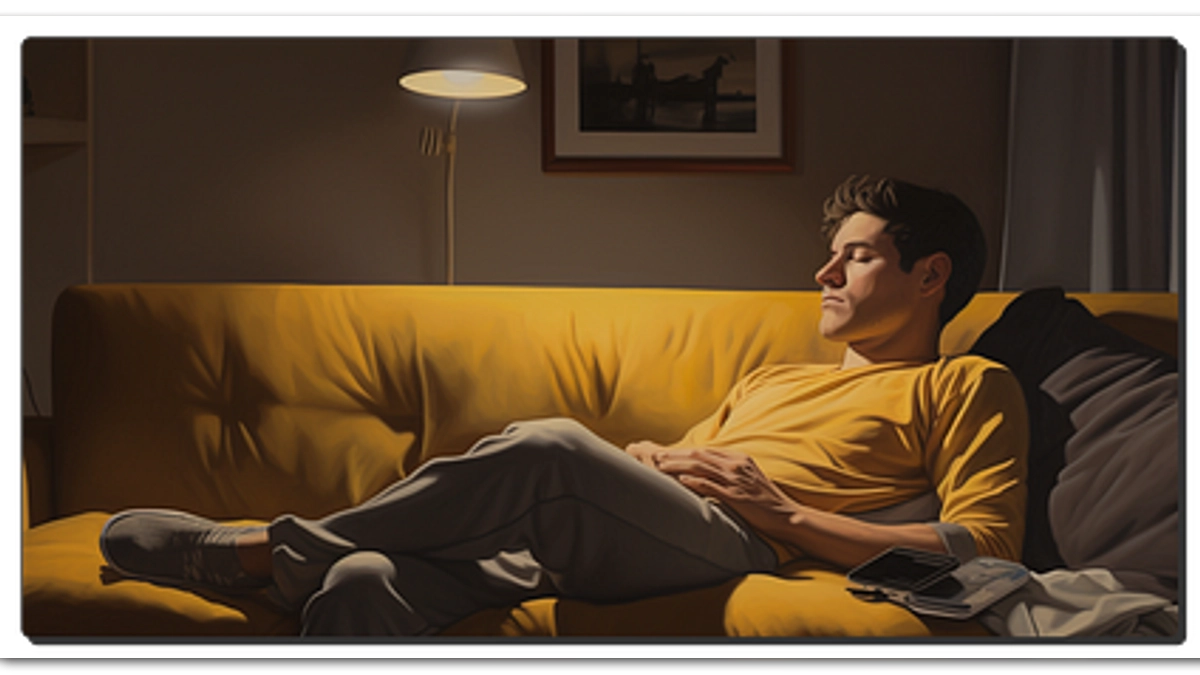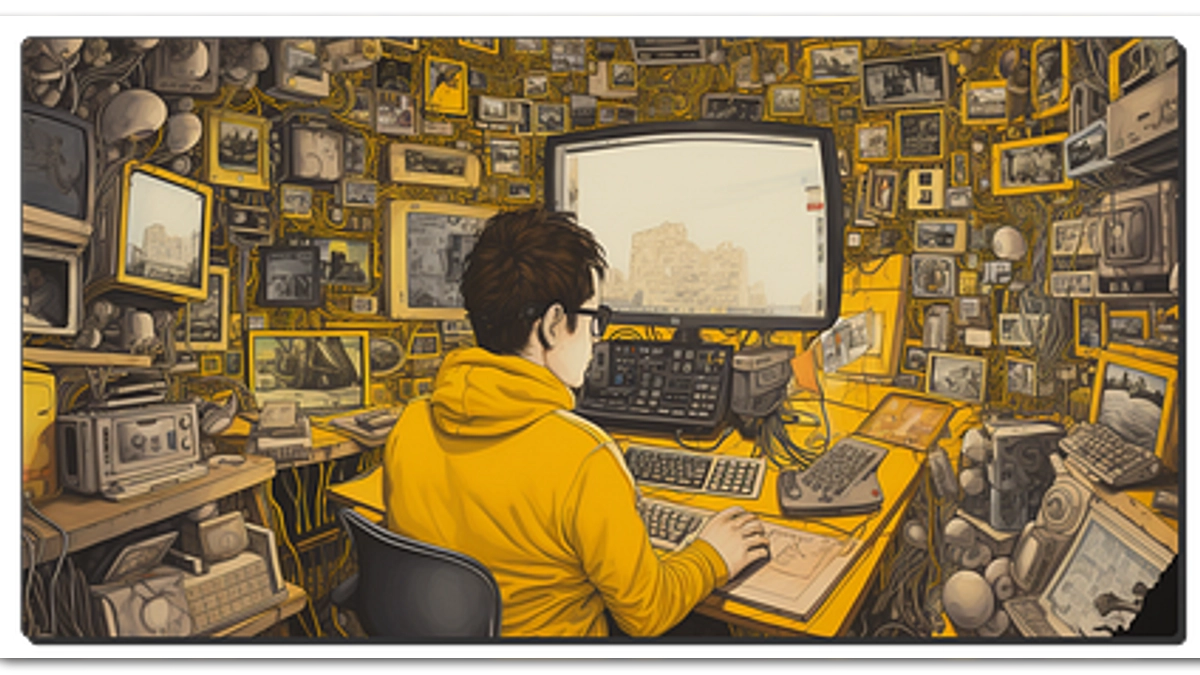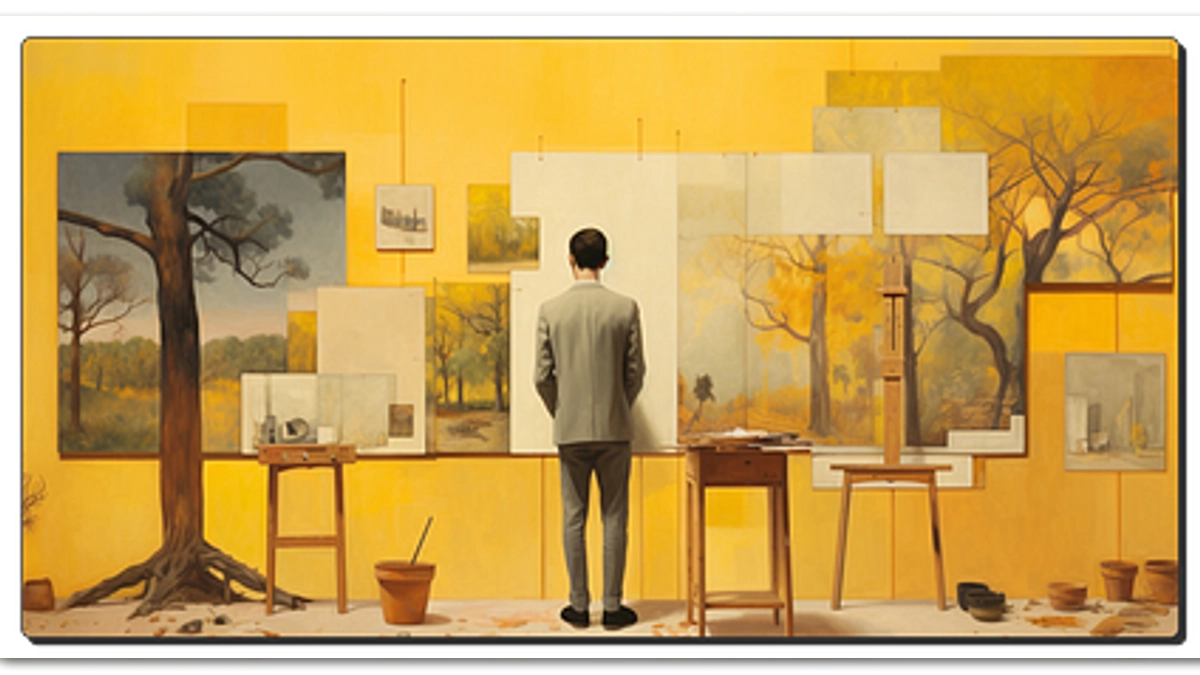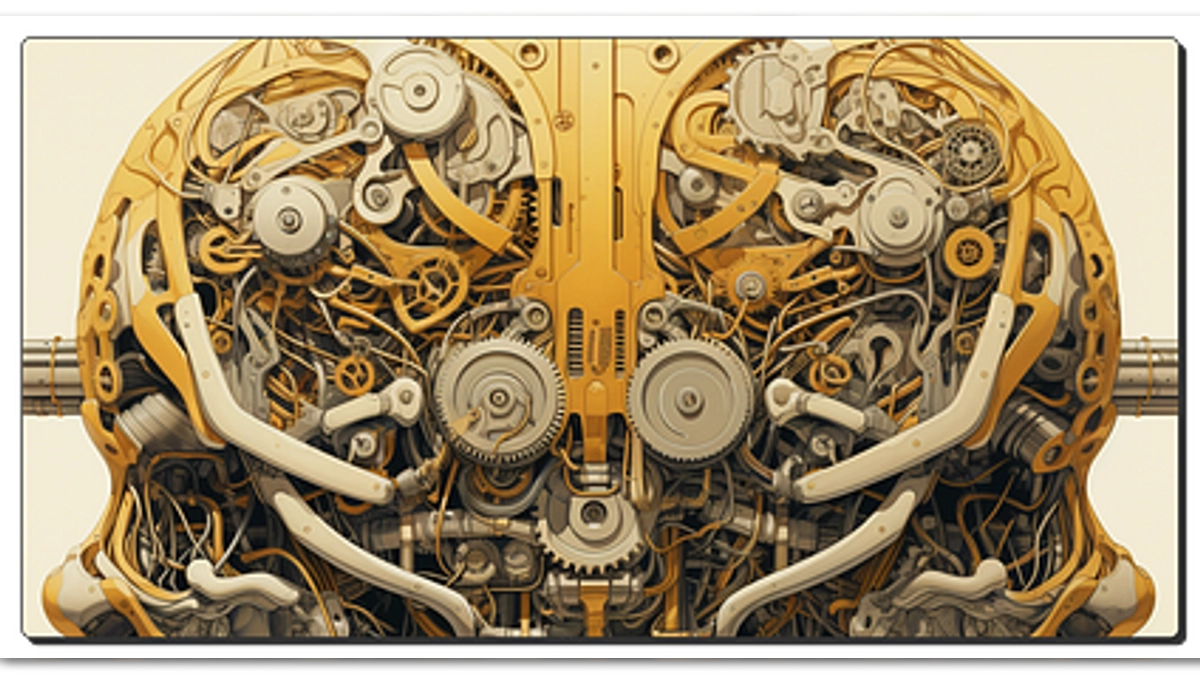You’re not lacking creativity, you’re overwhelmed
Navigating content overload — Curate to create
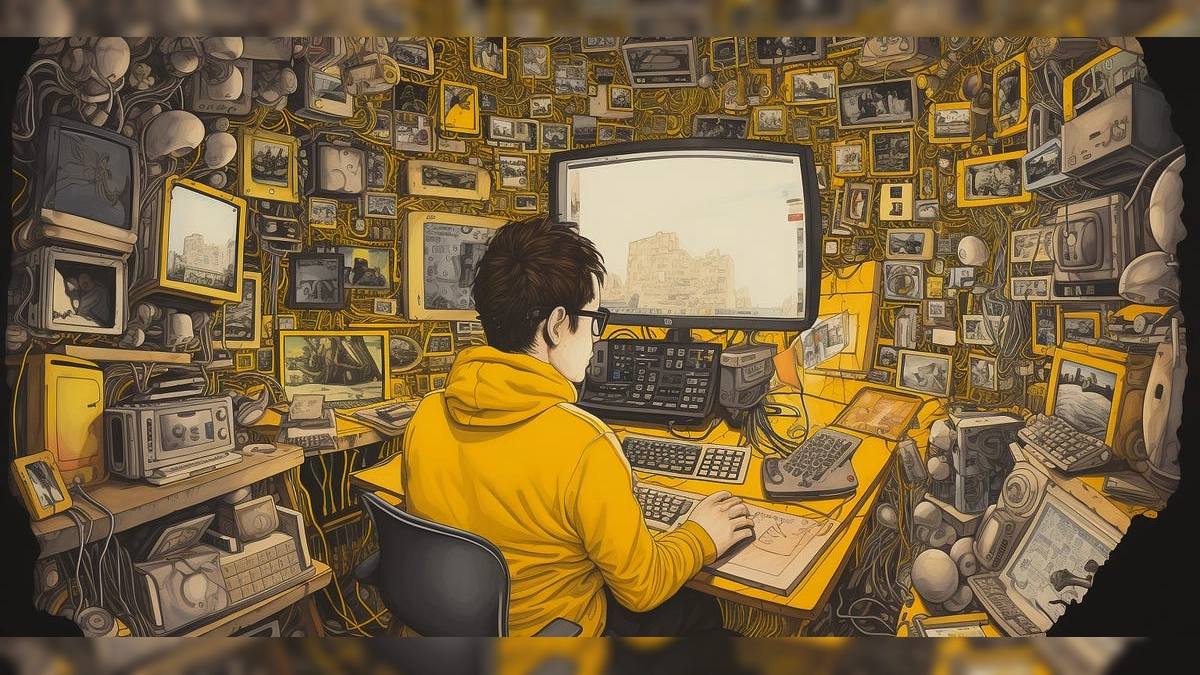
By now, digital hoarding has become a universal experience.
Every minute on the internet:
167M videos are watched on Tiktok
1.7M posts are shared on Facebook
5.9M things are searched on Google
65k photos are shared on Instagram
3.7M videos are watched on Youtube
2.4M messages are sent on Snapchat
Attention is the most valuable currency. And we are paying the price.
The sheer volume of content is overwhelming. As the paradox of choice states, when there’s too wide an array of available choices, people experience stress, anxiety, and ultimately dissatisfaction or decision paralysis rather than liberation or happiness.
I’ve been there. You’ve been there. We’ve all been there.
You come home from work. Tired and looking to disconnect a bit with some entertainment. But you’re faced with the choice: which streaming service do I use? I have 5. You choose one. Let’s say Netflix. Now what?
The home screen welcomes you to a selection of titles. The thumbnails and titles all hyper-optimized for you to feel enticed to watch them. So you end up browsing mindlessly for 30 minutes until you settle on watching Friends again for the 894th time.
That’s called decision fatigue; where the mental effort required to evaluate and choose between many options can be exhausting.
It’s exhausting. It’s an epidemic.
And it has turned us into digital hoarders
We are compulsively saving pieces of content in hopes of not missing out on culture, entertainment, and knowledge.
But we end up doom scrolling ourselves into oblivion, saving these links in a digital vault where they’ll most likely be forgotten forever, never to be seen again.
We are crippled by the opportunity cost. Burdened with the lament of the possible missed opportunities or benefits associated with the unchosen option.
And ultimately, we end up not choosing at all.
Dissatisfied, guilty, and paralyzed with indecision.
And this has a direct effect on our capacity to be creative.
Creativity is inherently human. And content consumption is essential for us to be inspired.
We are meant to absorb the world through our senses, understand it, and share our own perspective with others.
It’s the first step in the never-ending cycle of The Creative Flywheel; curation, ideation, creation, and distribution.
Curation is the art of selection. It’s the filtering through the vast expanse of information we are exposed to, choosing what deserves our attention.
It’s a process that, for the most part, we do subconsciously.
But the attention economy has made it so that we have to engage proactively in this process of curation. Otherwise, we are powerless as to what makes it into our brains. What feeds our dreams and nurtures our hopes.
And the result is catastrophic.
A dull life experience, without depth, without purpose, without creativity.
How can you take back control and master the art of curation?
The answer, is to build curation a system.
We are constantly bombarded by content. There’s no time to consume it all. But there’s no denying either what an amazing resource the internet is. And how, when used correctly, it can enhance your life and your creativity.
So, you just need to be prepared for when that content becomes available to you.
One of the most popular curation systems out there is the Second Brain; popularized by productivity author Tiago Forte in his book “Building a second brain (Affiliate Link)”.
The core concept of the book revolves around the CODE Framework, which stands for:
Capture - Keep what resonates
Organize - Save for actionability
Distill - Find the essence
Express - Show your work
In a nutshell, the book is about creating a digital, external brain to help people manage their information overload, foster creativity, and enhance productivity.
Through an organized system, individuals can effortlessly capture, review, and connect ideas, enabling them to produce new insights and creations.
Another framework from Tiago is the PARA Framework, which stands for Projects, Areas, Resources, and Archive. He explains it in detail in his book “The PARA Method (Affiliate Link)”; but the key takeaway is intentionality.
You should always ask yourself what purpose something will serve, and save it accordingly.
If you don’t start being more intentional when selecting the things you save, making sure they will contribute to your current or future projects and areas, no system will prevent you from the digital hoarding.
These systems are of incredible use. But they need to be paired up with a habit of curation. Without a regular checkup of the things you save, your digital vault will keep growing and growing becoming yet again, overwhelming.
So after learning to be selective, you need to learn to let go.
You should regularly check your library of contents to, again, make sure that you’re only keeping what’s serving you.
Your brain will still be subject to FOMO (Fear of missing out), so you’ll need to counter act regularly, and archive what’s not needed.
We could fall into the easy argument that social media is a virus to our society and how everything that’s wrong with the world stems from it and how it has made us slaves to external validation and dopamine junkies.
However, social media can be, and is, used for good.
You’re just doing it wrong.
Instead of allowing the algorithm to recommend indiscriminately. Customize it.
Indicating what you are interested in through liking and sharing is important. But the single most effective thing you can do to ensure the value of your feeds, is to start blocking the content you don’t align with.
Don’t just scroll past it. Block it.
It’s an extra effort for sure, but the result will be well worth it.
Now, if you’re convinced of the power of the second brain, there are basically infinite options to build your system. But here are a few tools for you to consider:
Apple Notes (or any simple note-taking app). This would be the simplest approach of all. Your system doesn’t need to be fancy or use complicated tech. Here you have a dedicated tutorial by Tiago himself, explaining how to use the PARA Framework with Apple Notes. This is replicable to any note-taking app.
Notion. Originally a tool to create wikis it has now become one of the most popular apps to manage just about anything. It’s free for personal use and you can build amazing workspaces on it.
The learning curve is steep though. So proceed with caution.
But this is my current choice and it’s great for me as it integrates both my curation system and my creation system. So I can seamlessly navigate my full Creative Flywheel workflow from a single app.
YouTube's Thomas Frank offers a very detailed Notion Masterclass for you to build your second brain from scratch. If you have the time and want to learn how to use notion I encourage you to go through this tutorial. It will be of incredible use.
Obsidian. This one is less known but it has hard-core fans. I’m not a user myself but I’ve always been interested by how they basically create a knowledge matrix with all of your notes easing the process of combining new ideas.
I was recommended this tutorial to setup your second brain in obsidian. If you go through with it, let me know! 🤓
There are many other options you can try but I wouldn’t overthink it.
Just go with what feels more natural. Setting up these systems can feel daunting, and it might be. But you won’t regret trying.
Start small, and expand as you see the benefits.
There’s no creation without inspiration.
Every creator throughout history has morphed his interpretation of the world through their chosen medium. Whether that’s painting, writing, music or photography is irrelevant.
First and foremost, creators are curators.
They take it all in and reinterpret it in their own way.
Without curation there is no creation.
But the incessant digital hoarding we’ve been conditioned to practice only leads to decision fatigue and stifles our inherent creativity.
By adopting frameworks like the CODE or PARA method, you can harness the digital abundance to fuel, not hinder, your creative engine.
Remember, the intention is key in curation.
Your journey from being a passive consumer to an active curator is where your creative genius awaits.
So, curate to create.
Share
I write weekly about my learnings and insights on human creativity and how to hone and enhance our creative practice through technology and AI.
I teach you how to:
Improve your curation 🔍
Boost your ideation 💡
Enhance your creation ✍️
Amplify your reach 📢
so you can grow a brand and thrive in the rising creator economy.
Follow me on X/Twitter and LinkedIn so we can connect! 🤓
